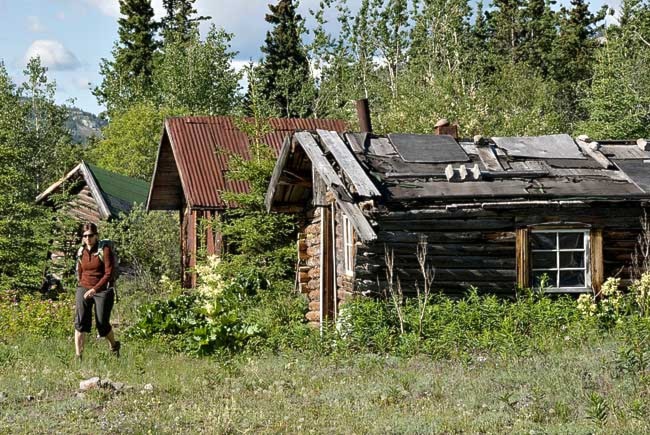Instead of approaching your next trip like another must-see checklist—Eiffel Tower? Check. Maasai tribal dance? Check. Panda bear? Check.—what if, instead, you joined an experiential journey promising a deeper sense of place and connection to your heritage by spending time with local people at special places threaded together by a historic route?
This is the idea behind Great River Journey, a new “geotour” down the Yukon River rooted in the relatively new concept of geotourism.
Like ecotourism, geotourism is a type of tourism that promotes more conscientious and responsible travel, but where it differs is its stronger emphasis on cultural heritage.
Geotourism aspires to sustainable tourism in more than the ecological sense; it finds ways to respect and protect a place’s character and promote conservation of culture and history.
“These visitors are looking for real things. They want to touch things and they want to gain a sense of place. So whatever spot they’re at in the trip, we want to connect them with legitimate, unscripted and genuine history and experiences,” says George Asquith, president and CEO of Great Northern Journeys.
It’s a more holistic approach to tourism that builds the visitor experience by weaving together historic structures, cultures and landscapes and making direct, meaningful contact with local people.
Asquith’s partners in the venture are the four First Nations whose traditional territories line the river—Kwanlin Dun, Ta’an Kwach’an, Tr’ondek Hwech’in and Selkirk—whose citizens are among the people who host, guide and care for guests.
“It’s an eight-day journey into the Yukon wilderness, and each step takes people further back in time and deeper into the wilderness and deeper into the history and culture of the Yukon,” adds Asquith.
Yukon’s wilderness is part of the allure, but what sets the Great River Journey apart is the weaving together of Yukon’s story by the people who live along the river and historic sites that line the route.
Guests board a riverboat in Whitehorse, and over the next week they travel 600 kilometres down the Yukon River to Dawson City by boat and floatplane.
Along the way, they stay at themed lodges and join activities that help transport visitors back in time to eras that define the region.
“For example, at Lake Laberge we spend a whole day doing active things like canoeing or kayaking, but many of these folks are more interested in the historical aspects of this trip,” says Asquith.
“Lake Laberge is just full of history—not just Gold Rush—it’s rich with First Nation history. We do our best to match people’s interests to what we have for them.”
A significant part of making that match is introducing visitors to historic sites and connecting them with the area’s First Nations people. Chief Ruth Massey of the Ta’an Kwach’an Council has been instrumental in the development of Great River Journey, and she has watched firsthand as visitors become enthralled by the stories told by their hosts.
“First Nation people’s life is their land, and we have a different perspective on the value of land,” she says. “And we don’t have a lot of written history, so a lot of tourists are very interested in who we are and where we come from. We share our history to start the conversation about why our lifestyle is so unique and special to us.”
“They quite enjoy hearing the stories, and it teaches the respect that we have for our land,” she adds. “We’re often asked questions about the importance of conservation ... and if we don’t conserve, we lose our lifestyle.”
The journey begins in Whitehorse, where guests tour the S.S. Klondike and begin their immersion in the Yukon River story.
They travel by boat to Upper Laberge and down the Thirty Mile Canadian Heritage River, a section of the Yukon River that was a busy and treacherous stretch for steam-powered paddlewheelers.
They explore relict log cabins and abandoned sternwheelers on the riverbanks, and follow trails that have been used for centuries.
“The journey triggers storytelling on both sides,” says Massie. “We’re bringing up the history of the gold rush and what it might have been like, and as the journey goes on they get more relaxed. People lead very busy lives and here it’s like they’re in another world on this journey and they’re very appreciative and respectful.”
While many stops are lesser-known heritage sites, one destination stands out for many. Midway along the Great River Journey, guests visit Fort Selkirk, a historic site near the confluence of the Yukon and Pelly rivers.
Part of the homeland of the Northern Tutchone and the location of a Hudson’s Bay Company trading post established in 1852, Fort Selkirk is co-owned and co-managed by the Yukon and Selkirk First Nation governments.
Further downriver, visitors get a taste of life in a 19th-century trading post and then complete their geotour exploring in Dawson City.
By visiting and touching historic places the stories are given substance and become woven into a fuller understanding of Yukon’s intricate cultural landscape.
“There’s a feeling that this is the last frontier and they can experience that,” says Massie. “And some of the guests are already planning a return trip.”
For more information on Yukon’s historic places, please go to www.yukonhistoricplaces.ca. If you are planning your next vacation around visiting historic places in other parts of Canada check out the Canadian Register of Historic Places at
www.historicplaces.ca.
This article is part of a series
produced by the Yukon Department of Tourism and Culture with the
support of the Government of Canada, Historic Places Initiative.
